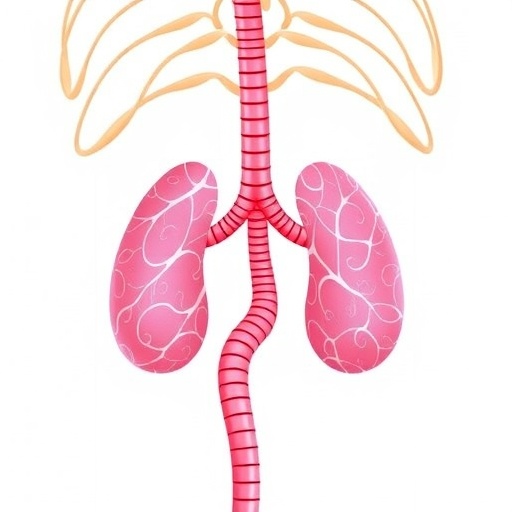In a groundbreaking study published in BMC Cancer, researchers from Taiwan have leveraged next-generation sequencing (NGS) technology to unlock the diagnostic potential of urinary microRNAs (miRNAs) in distinguishing muscle-invasive urothelial carcinoma (MIUC) from its non-muscle-invasive counterpart (NMIUC). Urothelial carcinoma, a prevalent form of bladder cancer, presents significant clinical challenges due to its propensity for recurrence and metastasis, particularly in the muscle-invasive form. This pioneering research ushers in a new era of non-invasive diagnostic methodologies, highlighting the promise of urinary miRNAs as pivotal biomarkers for early and precise disease stratification.
Urothelial carcinoma remains a formidable adversary in clinical oncology, in part because current diagnostic procedures are either invasive or lack sufficient sensitivity for early detection. The muscular layer involvement definitively alters prognosis and therapeutic strategy, underscoring the urgent need for biomarkers that can non-invasively and accurately discriminate between muscle-invasive and non-muscle-invasive disease stages. Addressing this critical gap, the Taiwanese study employed high-throughput NGS analysis of small RNA sequences isolated from urine samples of treatment-naïve UC patients, thereby circumventing the anatomical and procedural limitations inherent in tissue biopsy.
The study cohort comprised 52 individuals diagnosed either with MIUC or NMIUC, reflective of the clinical spectrum encountered in Taiwanese populations. Intriguingly, a higher prevalence of herbal medicine use was observed among MIUC patients, suggesting potential environmental or lifestyle influences modulating disease progression, though this observation warrants further investigation. By sequencing urinary small RNAs without invasive intervention, the researchers cataloged an extensive repertoire of differentially expressed miRNAs (DEmiRNAs), providing an unprecedented molecular fingerprint correlated with tumor invasiveness.
Bioinformatic analyses revealed a vast landscape of 1,967 DEmiRNAs differentiating MIUC from NMIUC, with 691 exhibiting significant upregulation and 232 showing downregulation in muscle-invasive cases. Among these, hsa-miR-3168 stood out with a remarkable 10.2-fold increase, positioning it as a potential sentinel miRNA for muscle invasion. Conversely, hsa-miR-511-3p was prominently downregulated by 9.32-fold, hinting at possible tumor-suppressive roles disrupted in aggressive UC phenotypes. Such robust fold changes underscore the discriminatory power of urinary miRNA signatures in clinical stratification.
To unravel the functional implications of these molecular alterations, the team conducted pathway enrichment analyses using KEGG and Gene Ontology (GO) frameworks. Upregulated miRNAs clustered predominantly in amino acid biosynthesis pathways, signifying alterations in metabolic rewiring characteristic of aggressive tumor behavior. This metabolic shift may reflect enhanced proliferative and survival demands of MIUC cells, illuminating potential metabolic vulnerabilities. Conversely, downregulated miRNAs were notably linked to the Hedgehog signaling pathway, a key regulator of cellular differentiation and proliferation frequently dysregulated in oncogenesis, suggesting disruption of this pathway contributes to urothelial carcinoma progression.
These novel insights into the molecular underpinnings of muscle-invasive urothelial carcinoma pave the way for the development of sensitive, non-invasive urine-based diagnostic assays. By harnessing the comprehensive miRNA landscape delineated by NGS, clinicians may soon be armed with transformative tools capable of early detection, risk stratification, and perhaps even therapy guidance without relying on invasive cystoscopy or biopsy. Such innovations promise to dramatically improve patient experience and outcomes while reducing healthcare burdens associated with current diagnostic workflows.
The methodological rigor of this study is notable, combining advanced sequencing technologies with validated computational tools such as DESeq2 for differential expression analysis and TarBase alongside DIANA-microT for miRNA target prediction. This integrative bioinformatics approach ensured high-confidence identification of biologically relevant miRNAs and their associated regulatory networks, underscoring the translational potential of these findings. Moreover, the use of the miEAA enrichment tool facilitated comprehensive pathway mapping, providing a systems-level understanding of miRNA-mediated oncogenic processes.
This research also highlights the importance of population-specific studies; by focusing on Taiwanese patients, the investigators accounted for genetic, environmental, and lifestyle factors unique to this demographic, ensuring the clinical applicability of their findings within the regional context. Such targeted investigations are essential for the realization of precision oncology paradigms globally, as molecular signatures can exhibit considerable variability across ethnicities and geographies.
Despite its promising results, the study acknowledges limitations, including a relatively small cohort size and the need for longitudinal validation to establish the prognostic value of identified miRNAs. Future research directions may include expanding patient cohorts, integrating multi-omics data, and exploring therapeutic interventions targeting dysregulated miRNA pathways. Additionally, investigating the mechanisms by which herbal medicine use correlates with MIUC incidence may offer novel insights into disease modulation and prevention strategies.
The implications of this work extend beyond urothelial carcinoma, setting a precedent for non-invasive cancer diagnostics utilizing urinary miRNA profiles. As urine is an easily accessible biofluid, liquid biopsy approaches harnessing miRNAomics hold immense potential for widespread clinical adoption, early cancer detection, monitoring disease recurrence, and assessing therapeutic efficacy with minimal patient discomfort.
In conclusion, the comprehensive surveillance of urinary microRNAs reported here represents a landmark advance in bladder cancer research. By delineating distinct molecular signatures associated with muscle invasion, this study not only enhances our molecular understanding of urothelial carcinoma progression but also charts a clear path towards clinically deployable, non-invasive diagnostic solutions. Such innovations herald a future where precision diagnostics facilitate timely, individualized interventions, ultimately improving survival and quality of life for patients afflicted with this challenging malignancy.
Subject of Research: Molecular profiling of urinary microRNAs to differentiate muscle-invasive from non-muscle-invasive urothelial carcinoma using next-generation sequencing in Taiwanese patients.
Article Title: Comprehensive surveillance of MicroRNA to discriminate between muscle-invasive and non-muscle-invasive urothelial carcinoma based on noninvasive urinary small RNA sequencing in Taiwanese patients.
Article References: Yang, IN., Liang, CA., Wu, CC. et al. Comprehensive surveillance of MicroRNA to discriminate between muscle-invasive and non-muscle-invasive urothelial carcinoma based on noninvasive urinary small RNA sequencing in Taiwanese patients. BMC Cancer (2025). https://doi.org/10.1186/s12885-025-15284-5
Image Credits: Scienmag.com
DOI: https://doi.org/10.1186/s12885-025-15284-5




